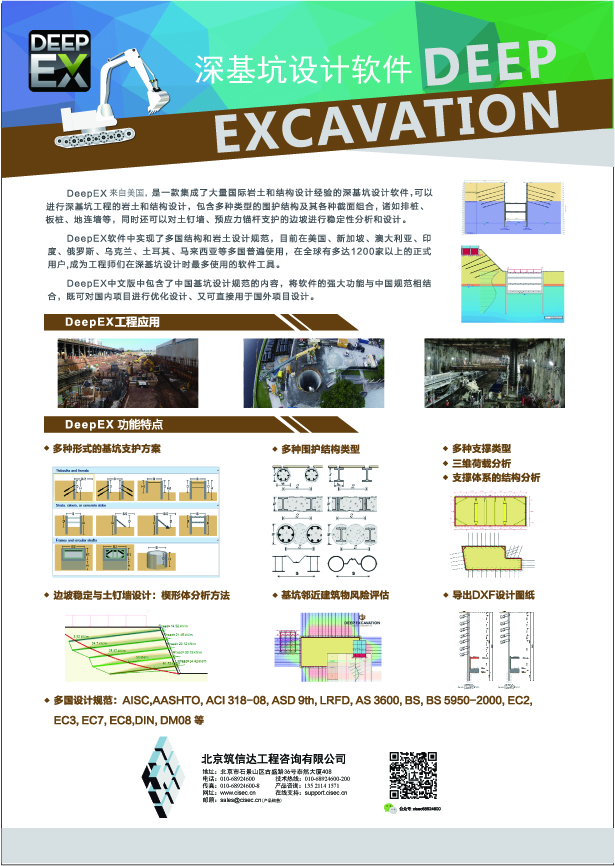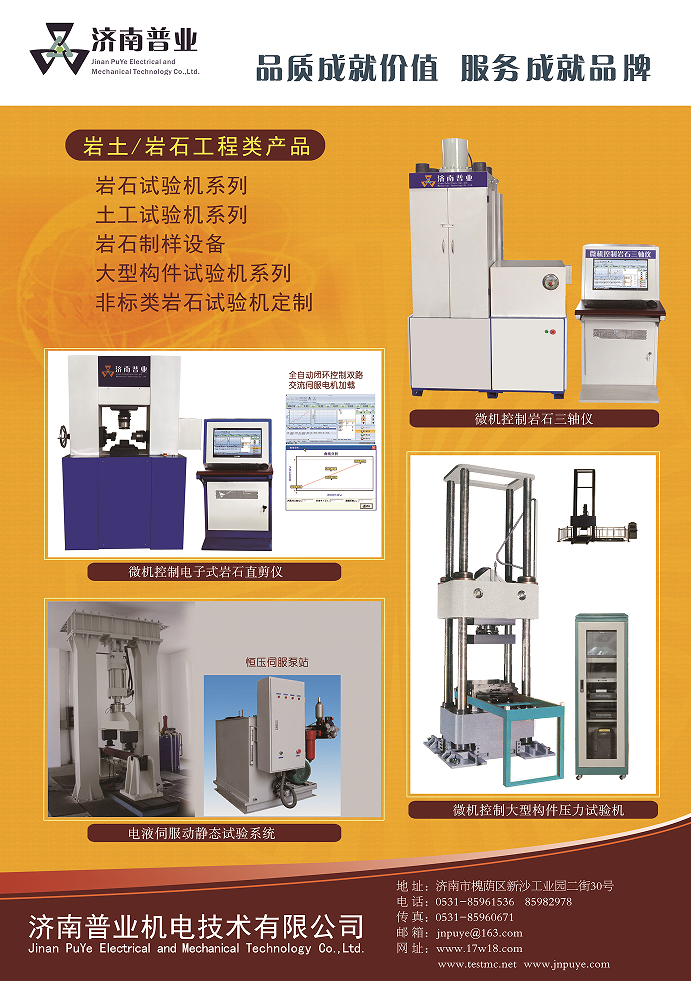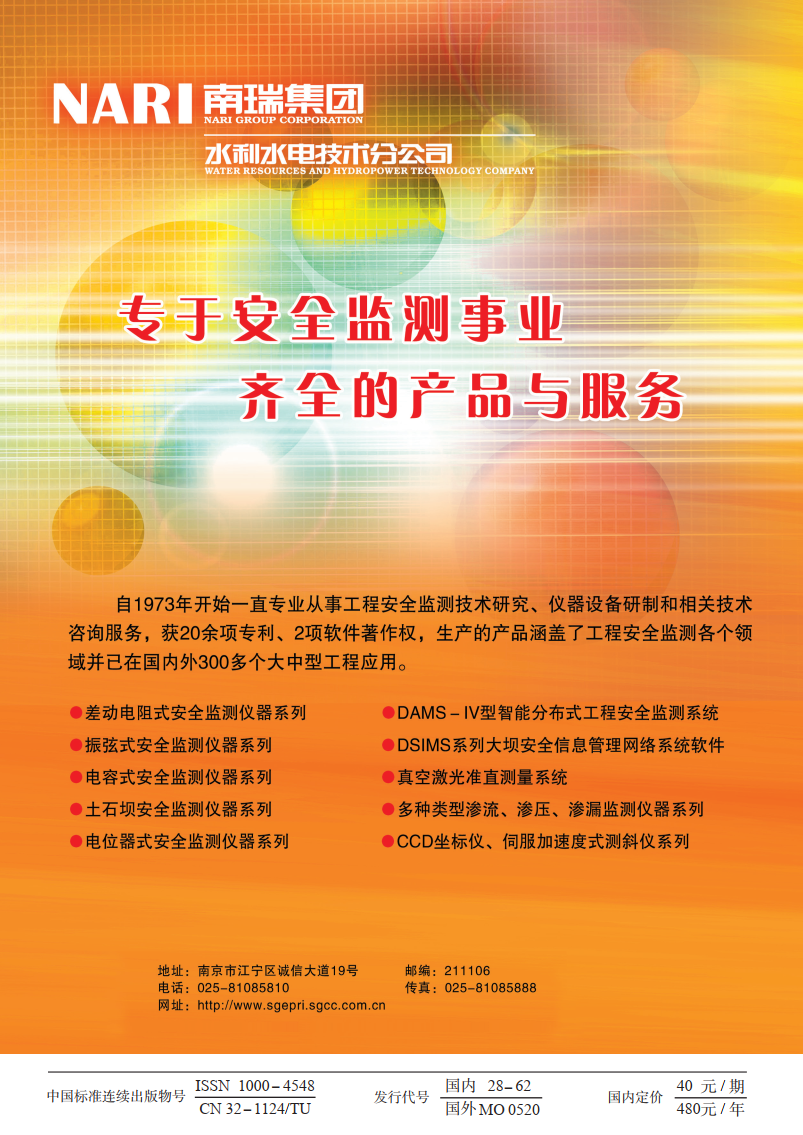| [1] |
CHANG M F.Basal stability analysis of braced cuts in clay[J]. Journal of Geotechnical & Geoenvironmental Engineering, 2000, 126(3): 276-279.
|
| [2] |
秦会来, 黄茂松, 王卫东. 非均质软土基坑抗隆起稳定性的极限分析方法[J]. 岩土力学, 2008, 29(10): 2719-2724.
(QIN Hui-lai, HUANG Mao-song, WANG Wei-dong, et al.Limit analysis method for basal stability of braced excavation against upheaval in heterogeneous soft clay[J]. Rock and Soil Mechanics, 2008, 29(10): 2719-2724. (in Chinese))
|
| [3] |
黄茂松, 余生兵, 秦会来. 基于上限法的K0固结黏土基坑抗隆起稳定分析[J]. 土木工程学报, 2011, 44(3): 101-108.
(HUANG Mao-song, YU Sheng-bing, QIN Hui-lai.Upper bound method for basal stability analysis of braced excavations in K0-consolidated clays[J]. Chinese Civil Engi- neering Journal, 2011, 44(3): 101-108. (in Chinese))
|
| [4] |
ZDRAVKOVIĆ L, POTTS D M, HIGHT D W.The effect of strength anisotropy on the behaviour of embankments on soft ground[J]. Géotechnique, 2002, 52(6): 447-457.
|
| [5] |
HASHASH Y M A, WHITTLE A J. Mechanisms of load transfer and arching for braced excavations in clay[J]. Journal of Geotechnical & Geoenvironmental Engineering, 2002, 128(3): 187-197.
|
| [6] |
杜佐龙, 黄茂松. 非均质与各向异性黏土基坑抗隆起稳定分析[J]. 岩土力学, 2013, 34(2): 455-467.
(DU Zuo-long, HUANG Mao-song.Analysis for basal stability of braced excavation in nonhomogeneous and anisotropic clay[J]. Rock and Soil Mechanics, 2013, 34(2): 455-467. (in Chinese))
|
| [7] |
CASAGRANDE A, CARILLO N.Shear failure of anisotropic soil[J]. Journal of the Boston Society of Civil Engineers, 1944, 31(4): 74-87.
|
| [8] |
应宏伟, 张金红, 周建, 等. 基于空心圆柱仪试验的各向异性软黏土基坑抗隆起稳定分析[J]. 岩土力学, 2016, 37(5): 1237-1242.
(YING Hong-wei, ZHANG Jin-hong, ZHOU Jian el at. Limit equilibrium analysis on stability against basal heave of excavation in anisotropy soft clay[J]. Rock and Soil Mechanics, 2016, 37(5): 1237-1242. (in Chinese))
|
| [9] |
沈扬. 考虑主应力方向变化的原状软黏土试验研究[D]. 杭州: 浙江大学, 2007.
(SHEN Yang.Experimental study on effect of varlation of principal stress orientation on undisturbed soft clay[D]. Hangzhou: Zhejiang University, 2007. (in Chinese))
|
| [10] |
李广信. 高等土力学[M]. 北京: 清华大学出版社, 2004.
(LI Guang-xin.Advanced soil mechanics[M]. Beijing: Tsinghua University Press, 2004. (in Chinese))
|
| [11] |
高彦斌, 楼康明. 上海软黏土强度固有各向异性[J]. 同济大学学报 (自然科学版), 2013, 41(11): 1658-1663.
(GAO Yan-bing, LOU Kang-ming.Inherent anisotropy of Shanghai soft clay[J]. Journal of Tongji University (Natural Science Edition), 2013,41(11): 1658-1663. (in Chinese))
|
| [12] |
张诚厚. 两种结构性粘土的土工特性[J]. 水利水运工程学报, 1983(4): 68-74.
(ZHANG Cheng-hou.Engineering propertities of two structural clay[J]. Hydro-Science and Engineering, 1983(4): 68-74. (in Chinese))
|
| [13] |
龚晓南. 软黏土地基各向异性初步探讨[J]. 浙江大学学报(工学版), 1986(4): 103-115.
(GONG Xiao-nan.Preliminary study on anisotropy of soft clay foundation[J]. Journal of Zhejiang University, 1986(4): 103-115. (in Chinese))
|
| [14] |
赵锡宏, 姜洪伟, 袁聚云, 等. 上海软土各向异性弹塑性模型[J]. 岩土力学, 2003, 24(3): 322-330.
(ZHAO Xi-hong, JIANG Hong-wei, YUAN Ju-yun, el at. The anisotropic elastic-plastic model of Shanghai soft soil[J]. Rock and Soil Mechanics, 2003, 24(3): 322-330. (in Chinese))
|
| [15] |
于京杰. 真三轴仪的研制及上海粘性土性能与应用研究[D]. 上海: 同济大学, 1988.
(YU Jing-jie.Develoent of real triaxial apparatus and study on the performance and application of Shanghai soft clay[D]. Shanghai: Tongji University, 1988. (in Chinese))
|
| [16] |
袁聚云. 软土各向异性性状的试验研究及其在工程中的应用[D]. 上海: 同济大学, 1995.
(YUAN Ju-yun.Experimental study on anisotropic properties of soft soil and its application in engineering[D]. Shanghai: Tongji University, 1995. (in Chinese))
|
| [17] |
梁令枝. 考虑土体固有各向异性的三轴和直剪试验的研究[C]// 第19届全国结构工程学术会议论文集(第Ⅱ册). 济南, 2010: 282-285.
(LIANG Ling-zhi.Study on the shear test of inherent anisotropy[C]// Proceedings of the 19th National Structural Engineering Conference. Jinan, 2010: 282-285. (in Chinese))
|
| [18] |
LO K Y.Stability of slopes in anisotropic soils[J]. Journal of the Soil Mechanics & Foundations Division, 2014, 91(4): 85-106.
|
| [19] |
WHEELER S J, NÄÄTÄNEN A, KARSTUNEN M, et al. An anisotropic elastoplastic model for soft clays[J]. Canadian Geotechnical Journal, 2003, 40(2): 403-418.
|
| [20] |
OTHA H, NISHIHARA A.Anisotropy of undrained shear strength of clays under axi-aysmentric loading conditions[J]. Soils & Foundations, 1985, 25(2): 73-86.
|
| [21] |
CHANG M F, TEH C I, CAO L F.Critical state strength parameters of saturated clays from the modifie[J]. Canadian Geotechnical Journal, 1999, 36(36): 876-890.
|
| [22] |
沈恺伦. 软黏土结构性、塑性各向异性及其演化[D]. 杭州:浙江大学, 2006.
(SHEN Kai-lun.Degradation of soil structure and plasticity evolution of natrual clay[D]. Hangzhou: Zhejiang University, 2006. (in Chinese))
|
| [23] |
KOUTSOFTAS D C, LADD C C.Design strengths for an offshore clay[J]. Journal of Geotechnical Engineering, 1985, 111(3): 337-355.
|
| [24] |
秦会来, 黄茂松, 马少坤. 黏土基坑抗隆起稳定分析的多块体上限解[J]. 岩石力学与工程学报, 2010, 29(1): 73-81.
(QIN Hui-Lai, HUANG Mao-song, MA Shao-kun.The upper solution of stability analysis against basal heave of excavation in soft clay[J]. Journal of Rock Mechanics and Engineering, 2010, 29(1): 73-81. (in Chinese))
|
| [25] |
沈珠江. 基于有效固结应力理论的黏土土压力公式[J]. 岩土工程学报, 2000, 22(3): 353-356.
(SHEN Zhu-jiang.Soil pressure formular of clay based on effective consolidation stress theory[J]. Chinese Journal of Geotechnical Engineering, 2000, 22(3): 353-356. (in Chinese))
|
| [26] |
齐添. 软土一维非线性固结理论与试验对比研究[D]. 杭州: 浙江大学, 2008.
(QI Tian.Studies on the contrast of one dimensional nonlinear consolidation theory and test in soft clay[D]. Hangzhou: Zhejiang University, 2008. (in Chinese)))
|
| [27] |
李广信. 杭州地铁一号线湘湖站基坑事故再议[J]. 岩土工程技术, 2015, 29(6): 273-279.
(LI Guang-xin.Discussion on accident of foundation excavation of Xianghu station of Hangzhou subway No.1 line age[J]. Geotechnical Engineering Technique, 2015, 29(6): 273-279. (in Chinese))
|
| [28] |
姜洪伟, 赵锡宏, 张保良. 各向异性条件下软土深基坑抗隆起稳定分析[J]. 岩土工程学报, 1997, 19(1): 1-7.
(JIANG Hong-wei, ZHAO Xi-hong, ZHANG Bao-liang.Analysis of heave-resistant stability for deep braced excavation in soft clay under anisotropic condition[J]. Chinese Journal of Geotechnical Engineering, 1997, 19(1): 1-7. (in Chinese))
|
 百度学术
百度学术
 百度学术
百度学术
 百度学术
百度学术
 本站查看
本站查看
 百度学术
百度学术








 下载:
下载:
